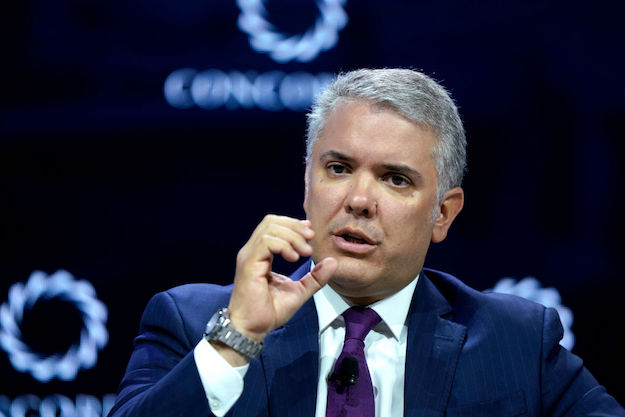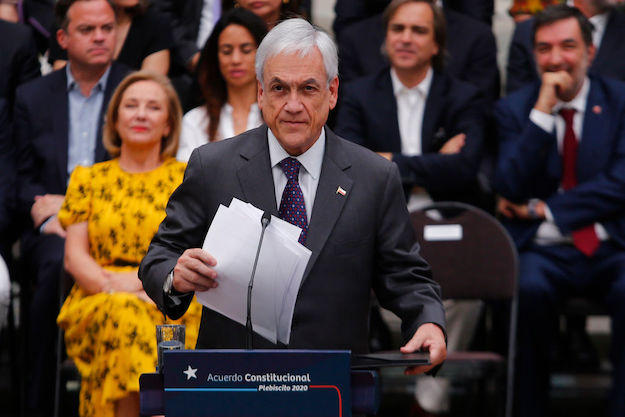AQ traveled to Colombia, Chile and Peru in 2012 to study natural resource extraction and its effect on social inclusion, made possible with the generous support of the Ford Foundation. On each trip, the team met with mining officials, local government representatives, community leaders, and environmental activists to gain a broad, nuanced and diverse understanding of this issue. Learn more about the specific situations in each country through the video interviews on this page including a short documentary on the proposal by the mining company Cerrejón to move a river in Colombia.
Watch the documentary from Colombia
Watch videos from stakeholders in Chile
Watch videos from stakeholders in Peru
Al otro lado del Río: Proyecto de reubicación del Río Ranchería en la provincia de La Guajira, Colombia
In one of the poorest provinces of Colombia, La Guajira, lies one of the country’s most active and more progressive coal mining companies in the country, Cerrejón. In the early 2000s, Cerrejón estimated that 500 million tons of coal were lying under the Río Rancheria, a river bed in the region. Getting it out, though, would require moving an entire river 16 miles (26 kilometers), affecting the Wayúu Indigenous community that lives alongside it and for whom the river is its lifeblood.
This AQ documentary explores this controversial project from the perspectives of various members of the Indigenous Wayúu community and Cerrejón officials, raising questions about the consulta previa process, the environment, royalties, and the role of the government.
The footage was filmed during an AQ trip to Colombia in September 2012, made possible with the generous support of the Ford Foundation.
Building a Bridge to Nowhere
Ivan Infante, Former Mayor of Pica
Ivan Infante, mayor of Pica for the last 15 years, talks about the high expectations that Pica’s residents had when Collahuasi first came to the region 10 years ago: primarily hope of more work opportunities and a higher quality of life. However, he argues that Collahuasi has fallen well short of these expectations, and that the mine’s presence in Pica has not yielded impactful investments in the community. In fact, most of Collahuasi’s investments in infrastructure and development have been made in Iquique, the capital of the Tarapacá region, and bypassing Pica altogether.
Turning Caution into Opportunity
Eduardo Arroyo, Presidente, Asociación Propietarios Agrícolas Resbaladero, Banda y Ánimas
As president of one of Pica’s largest farmers’ associations, Arroyo been a direct beneficiary of Collahuasi’s investment. He explains that farmers are usually wary of the mining industry because of the oft-contentious use of water. But in his case, Collahuasi has invested in an irrigation system for Pica’s famous citrus groves. In addition, mines like Collahuasi purchase citrus products Arroyo grows for use in their dining halls, creating supply chain opportunities that were unimaginable prior to the mine’s arrival.
The Dark Side of Mining
Catalina Cortes, Director, ADI Jiwasa Oraje
Cortes is Pica’s representative to the Area de Desarrollo Indigena Jiwase Oraje indigenous association. Her experience with the mining industry, like many of her colleagues from similar communities, has been defined by environmental exploitation and infringement on her ancestral territory. According to Cortes, Collahuasi is indirectly drawing water from the Laguna del Huasco salt lake, though she has trouble refuting Collahuasi-funded research that says the opposite.
Sheep: A source of food and economic development
David Ocaño Vidal, Coordinador del departamento de Ancash para CARE Perú
David Ocaño Vidal boasts that Antamina’s financial assistance has helped CARE Perú begin its sheep herding pilot program—with sheep imported from Australia—to provide milk and cheese for the local community and eventually turn it into a profitable textile market throughout Peru. Antamina is dedicated to measuring and evaluating the success of their program, setting them apart from other mining companies launching similar programs in the region.
The Hurdles of Altruism
Jaime Gálvez, Gerente del Fondo Minero de Antamina
Jaime Gálvez describes Antamina’s commitment to social inclusion projects in the surrounding communities which focus on health and nutrition, education, productive development and infrastructure. Together, their work has decreased the malnourishment rate from 39 percent to 22 percent and increased the education level within the community—among other notable advances—yet there are challenges ahead with new government laws.







